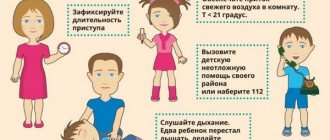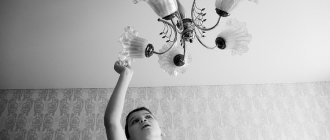For a considerable number of people, low blood pressure is an individual physiological norm and is not accompanied by such unpleasant symptoms as nausea or dizziness.
This mainly applies to well-trained people (for example, professionally involved in sports).
If a person experiences nausea with low blood pressure, loss of strength, darkening of the eyes or fainting, these are clear signs of a pathological condition called hypotension.
Does a person always feel sick with low blood pressure and how to eliminate the unpleasant symptom? It’s worth looking into this.
Main signs of hypotension
Arterial hypotension is a condition characterized by a decrease in systolic blood pressure of less than 90 mmHg. and diastolic less than 60 mm Hg. It can be acute or chronic.
Acute arterial hypotension occurs with extensive bleeding, disturbances in the normal functioning of the heart, dehydration and is characterized by hypoxia of the brain and other vital organs. Symptoms of hypotension also include constant weakness, decreased activity, dizziness and headaches. A person may be apathetic, irritable, the skin is pale, shortness of breath and signs of impaired thermoregulation often appear - the limbs feel cold to the touch.
The connection between vertigo and low blood pressure
Arterial hypotension and dizziness often occur together. This is due to the fact that with low pressure, blood circulation in many internal organs (heart, kidneys, brain, liver) is reduced and gradually leads to a condition characterized by a lack of oxygen. The brain experiences hypoxia due to lack of cerebral circulation. Fainting (syncope) is a short-term loss of consciousness that occurs as a result of reduced blood flow in the vessels of the brain, which occurs with arterial hypotension. Low blood pressure is accompanied by a decrease in perfusion and blood supply to internal organs, including the brain.
Causes of hypotension and dizziness
Often, dizziness with low blood pressure occurs reflexively in response to pain, medical procedures (blood sampling, visiting the dentist), emotional arousal, or excessive stress during defecation or urination. However, the most common causes of the development of presyncope and fainting include prolonged exposure to a stuffy room or prolonged stay in an upright position (in public transport, queues), excessive physical exertion, leading to neuroreflex reactions. To establish the exact cause of this condition, a full range of diagnostic studies is necessary. For example, an orthostatic test and a test with physical activity.
What are the dangers of low blood pressure and dizziness?
Arterial hypotension, combined with dizziness, can lead to the development of fainting. Fainting is dangerous because a person can be injured when it develops, for example, while on public transport. This is especially dangerous for pregnant women and children.
Helpful information
In elderly people, dizziness often occurs when there is a sudden change in body position from horizontal to vertical against the background of arterial hypotension.
The appearance of this symptomatology may be associated with neurological pathology, which requires differential diagnosis, which is especially important for risk groups such as the elderly and pregnant women.
conclusions
Low blood pressure accompanied by nausea is a dangerous sign that requires medical examination and adequate therapy.
Emergency situations, when a person starts vomiting with low blood pressure and faints, should be a reason to call an ambulance.
Hypotension can be prevented by a healthy lifestyle, physical exercise, and hardening.
Source
First aid
People suffering from hypotension often cope with this condition on their own. Syncope is often preceded by warning signs. These include nausea, the patient feeling his own heartbeat and dizziness. Being in a vertical position, it is enough for them to take a horizontal position, for example, sit or lie down on the sofa. It is advisable that the legs are in an elevated position. This will cause the blood vessels to narrow and the pressure will begin to rise. If a person faints, you can bring ammonia to him, and in its absence - any other substance that has the property of reflex irritation. This will cause the person to recover from fainting and return to normal.
If a pregnant woman or child faints, it is necessary to call an ambulance to rule out a serious pathology that caused the loss of consciousness.
Self-administration of medications is excluded. This is especially true for strangers.
Important information
If you witness a fainting or fainting state on the street, try to place the person on his back, then turn him on his side and elevate his legs if possible. Next, you need to make sure that the airways are clear, determine the pulse and make sure that nothing threatens the person’s health and life.
How to quickly relieve the condition at home
If dizziness occurs when pressure decreases due to external influences and the risk of pathology is low, you can attempt to relieve the painful symptoms yourself. To combat a mild headache, sometimes it is enough to spend a little time outdoors and relax.
To make you feel better in more severe conditions, you can use the following recommendations:
- drink tincture of eleutherococcus, ginseng or St. John's wort;
- take a tablet of Citramon or its analogues for severe pain;
- apply a heating pad to the extremities to eliminate chills when pressure drops;
- eat foods high in vitamins C, B, B12;
- take a warm bath with the addition of a decoction of sage, pine needles and sea salt.
Various first aid methods do not always help provide the expected effect, since the body may be resistant to some home therapy methods. At the same time, attempts to alleviate the condition at home are absolutely safe, so they can be tried without any risk.
It is necessary to regularly note pressure indicators measured in a dynamic state and describe in detail the situations that served as prerequisites for changes in pressure and the occurrence of dizziness. Having detailed records will help you more accurately assess your health status during further professional examination.
If hypotension is a consequence of any illness, it should be treated first. If the syndrome occurs on its own, certain recommendations must be followed.
What to do if a person has low blood pressure and is often dizzy:
- Follow a daily routine (sleep at least 8 hours; if you have insomnia, you should consult a doctor to prescribe sedatives).
- It is not recommended to get out of bed immediately in the morning; there is a risk of collapse and loss of consciousness.
- Light exercises, lying down: turning the head, extending and bending the limbs (after this you can sit down and get up after a few minutes).
- Hardening, water procedures: contrast shower.
- Physical activity, sports.
- Exercise in the morning for 10-15 minutes.
- Nutritious breakfast, coffee with sugar.
- Healthy eating throughout the day.
Hypotonic patients are not recommended to drink green tea or diuretics - they can lower blood pressure below normal. If you have additional symptoms, it is better to consult a neurologist before using any medications.
Hardening and water procedures will help cope with hypotension
Treatment
Treatment of arterial hypotension is divided into non-pharmacological and medicinal. The main goal of treatment is to normalize cerebral blood flow.
Drugs
Drug treatment of hypotension and dizziness is based primarily on the established causes of these conditions. Cardiology patients require specialized treatment, which includes the use of antiarrhythmic therapy, surgery, or implantation of a pacemaker. The prescription of medications is carried out exclusively by the attending physician and requires treatment according to the developed scheme.
The principles of treatment are as follows:
- Normalization of blood pressure;
- Restoration and normalization of circulating blood volume;
- Prescribing medications to prevent the development of bradycardia;
- In some cases, the use of compression garments is effective.
The following drugs are effective: fludrocortisone, midodrine and desmopressin. The drugs have vasoconstrictor and antidiuretic effects.
Folk recipes
Traditional medicine includes:
- adherence to the principles of rational nutrition (sufficient protein intake during the day, eating small portions 5-6 times a day, mandatory presence of fruits and vegetables);
- carrying out procedures aimed at strengthening blood vessels - massage, visiting the pool, hydromassage, using a contrast shower);
- night sleep - the head end of the bed should be raised for more efficient distribution of fluid throughout the body;
- herbal teas (chamomile, lemon balm, mint, passionflower), which calm a person in stressful situations and lead to stabilization of his condition.
What to do?
What to do if your blood pressure drops sharply and you start to feel dizzy?
- Lie down on the bed and relax.
- Try to calm down. This condition is temporary, and nervousness will aggravate the situation and cause an increase in heart rate.
- Focus your gaze on one point, this will help avoid fainting.
- To eliminate vertigo, massage the back of your head.
In severe conditions caused by persistent arterial hypotension, you should immediately seek medical help (call an ambulance, go to the doctor yourself, or take a relative).
Prevention of the disease
To avoid getting sick, change your lifestyle:
- Learn to eat healthy. Remove preservatives, dyes, emulsifiers from your diet, add fresh vegetables and fruits, take multivitamins.
- Do physical therapy. It helps to normalize the functioning of all organs and systems.
- Manage your time wisely so that you have the opportunity to rest. Go to bed no later than 23.00. And before going to bed, try to walk for half an hour in the fresh air.
Correct diagnosis
To find out the cause of hypotension and dizziness, get examined by a therapist and do the following research:
- ultrasound examination (ultrasound) of the neck and brain;
- radiography;
- Magnetic resonance imaging.
Treatment with tablets
Drug treatment should be carried out under the supervision of the attending physician. Typically, for dizziness caused by low blood pressure, it is recommended to take the following medications:
| Name | How to use |
| Citramon | Caffeine contained in the tablets stimulates cardiac and vascular activity and increases blood pressure. Take 1-2 tablets for attacks of dizziness. |
| Hepatamil | The drug increases the tone of the cardiovascular system and increases the strength of heart contractions. Prescribe 2 tablets three times a day. |
| Rantarin | An adaptogenic drug with a general tonic effect and a central nervous system stimulant. Prescribe 1 tablet 2-3 times a day. |
| Ekdisten | Tonic and metabolic agent. Indicated 1-2 tablets 3 times a day. |
ethnoscience
In addition to medications, folk recipes help well with hypotension:
- Tincture of prickly tartar. Take 2 tbsp. l. dry herbs, pour 200 ml of boiling water, boil for 10 minutes and leave for 30 minutes. Strain, take 1 tbsp. l. 4 times a day.
- Take 1 tbsp. l. crushed rhodiola root, pour ½ glass of vodka, leave for 10 days in a dark place. Drink 15-20 drops half an hour before meals for three weeks.
- Mix 40 g of red rowan fruits, 30 g of wheatgrass roots, 25 g of wild strawberry leaves, 20 g of dandelion root. Pour the mixture with 400 ml of boiling water, let it brew for 4 hours, strain. Take 100 ml 3 times a day before meals.
Who is more likely to suffer from low blood pressure?
Arterial hypotension can be physiological and occurs in athletes and people genetically predisposed to this condition. In pathological conditions, arterial hypotension acts as one of the main symptoms of somatoform dysfunction of the cardiovascular system. Its development is also observed in traumatic brain injuries, intracranial hypertension and dysfunction of the thyroid gland and adrenal glands. Pregnant women, children and women are more susceptible to arterial hypotension.
Preventive measures
The main measures to prevent arterial hypotension include:
- Constant monitoring of blood pressure at home;
- Timely visits to the cardiologist and compliance with prescribed therapy;
- Compliance with the work and rest regime;
- Night sleep should be at least 8 hours;
- Constant physical activity throughout the day;
- Compliance with the principles of a healthy lifestyle, which also includes, in addition to physical activity, a nutritious, balanced diet;
- Minimizing stress;
- Identification of the reasons that triggered the development of arterial hypotension and syncope;
- Limiting the consumption of alcoholic beverages and smoking;
- Minimizing human exposure to hot air (high temperatures when working in a workshop or high temperatures outside in the summer);
Timely detection and treatment of chronic diseases.
Questions for the doctor
Nausea as a sign of blood pressure fluctuations
So at what pressure do you feel sick – high or low? My mother has hypertension, but when her blood pressure rises, she only complains of severe headache and dizziness.
Hello! Nausea and vomiting can be signs of both high and low blood pressure. And, of course, these symptoms are not strictly “mandatory” for hypo- or hypertension. For many patients, they are not typical despite a significant increase or decrease in blood pressure.
Prevention of hypertension
Hello! Is it possible to somehow prevent the development of hypertension? Both parents had problems with blood vessels; my father died of a stroke last year. Now I am 46 years old, blood pressure is 120-130/80, no special complaints.
Good day! No matter how trivial it may sound, the best prevention of arterial hypertension is leading a healthy lifestyle. Watch your weight, limit the amount of salt in your diet, try to move more, and don’t get nervous over trifles. And, of course, visit your doctor regularly for preventive examinations.











